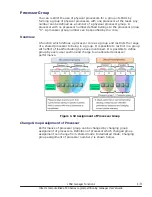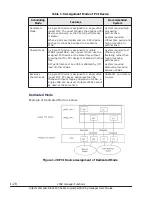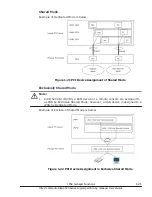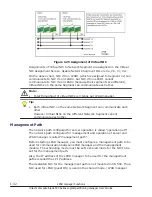
Figure 1-19 L3 cache allocation to LPAR
In the case indicated by (1), all three LPARs can access the entire L3 cache.
In the case indicated by (2), the L3 cache space allocated to the LPAR of
lower priority can be shared with the LPAR of higher priority. In the case
indicated by (3), the cache can be divided among isolated LPARs.
To allocate L3 cache space to LPARs, use the HVM management command
(HvmSh). You can also use the HVM management command (HvmSh) to
display the CAT-related configuration information required to use the L3
cache allocation functionality, and the usage status of the L3 cache allocation
functionality. For details, see the HVM Management Command (HvmSh)
Operation Guide.
Enabling the L3 cache allocation functionality
To enable the L3 cache allocation functionality:
1
.
From the Web console, enable Performance tuning options.
For details, see
Performance tuning options on page 2-21
.
2
.
Specify the L3 cache allocation settings by using the HVM management
command (HvmSh), execute the
opr LparCatCbm
command.
For details, see the HVM Management Command (HvmSh) Operation
Guide.
Logical Partitioning of PCI Devices
The method of logically dividing the physical processor is referred to as the
scheduling mode. You can select dedicated mode or shared mode for the
scheduling mode. Different features of each mode are shown in the table
below.
LPAR manager Functions
1-19
Hitachi Compute Blade 500 Series Logical partitioning manager User's Guide
















































